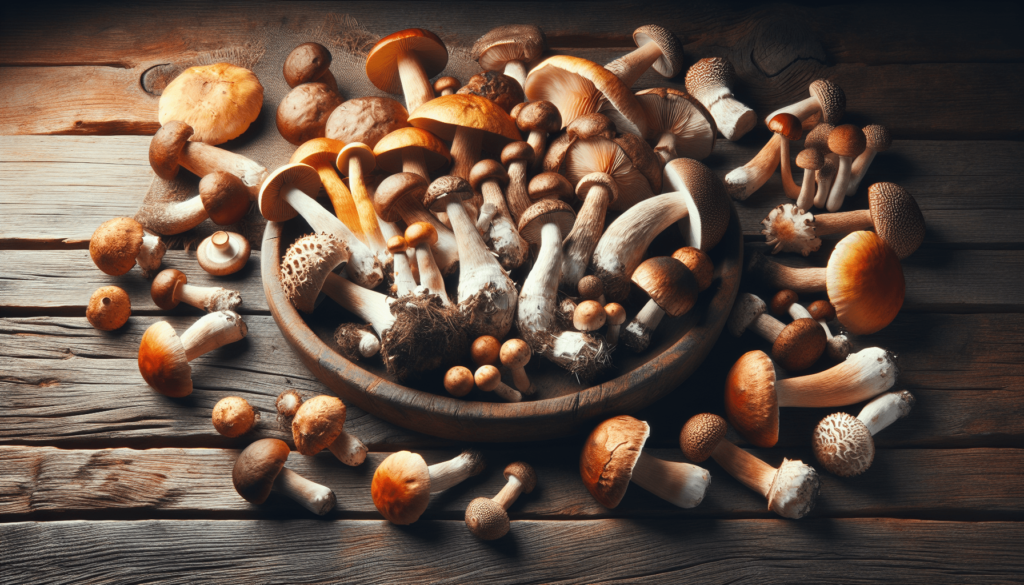Welcome to your go-to guide for handling mushroom poisoning from the comfort of your home! While not every instance of mushroom ingestion is dire, knowing how to respond quickly and effectively can make all the difference. In this friendly guide, you’ll discover essential first-aid measures you can take immediately, like identifying symptoms, inducing vomiting safely, and when to seek professional help. Empower yourself with the knowledge to act confidently and protect your loved ones, ensuring everyone’s well-being in those crucial moments. Have you ever wondered what you would do if you or someone you love accidentally ate a poisonous mushroom? It’s not exactly dinner conversation, but it’s a situation where knowing what to do can be a literal lifesaver. To give you peace of mind and preparedness, let’s dive into the crucial information on how you can treat mushroom poisoning at home.
Understanding Mushroom Poisoning
First things first, let’s understand what mushroom poisoning actually is. You’d be surprised to know how diverse and complex the world of mushrooms is. Some mushrooms can turn your culinary experience into a nightmare if they’re not the right kind.
What Causes Mushroom Poisoning?
Mushroom poisoning occurs when toxic substances present in certain types of mushrooms are ingested. These toxins can vary in type and severity, potentially causing symptoms that range from mild gastrointestinal discomfort to life-threatening organ failure.
Common Symptoms of Mushroom Poisoning
Identifying symptoms early can make all the difference. Let’s break down the symptoms you might encounter depending on the type of toxin ingested:
| Toxin Type | Common Symptoms | Onset Time |
|---|---|---|
| Gastrointestinal Irritants | Nausea, vomiting, diarrhea | 0.5 to 6 hours |
| Neurotoxins | Hallucinations, confusion, seizures | 6 to 12 hours |
| Hepatotoxins | Jaundice, liver failure, abnormal bleeding | 6 to 48 hours |
| Renal Toxins | Painful urination, lower back pain, kidney failure | 2 to 20 days |
Immediate Steps To Take at Home
If you suspect mushroom poisoning, timely action is crucial. Here’s what you should do immediately:
1. Stop Eating the Mushrooms
This might seem obvious, but it’s important to stop eating any more mushrooms immediately if you suspect they could be toxic. Even if symptoms are not yet showing, be strict about not consuming any more.
2. Save a Sample
If possible, save a sample of the mushroom in question (or a photo of it). This can greatly help medical professionals identify the toxin and administer the appropriate treatment.
3. Induce Vomiting (With Caution)
In some cases, inducing vomiting may be recommended to expel the toxins from the stomach, but this should be done with extreme caution and ideally under medical guidance.
4. Hydrate
Drinking water may help dilute some toxins, although it won’t mitigate more severe poisons. Hydration helps keep the kidneys working efficiently to flush toxic substances out.

Home Remedies and First Aid
While medical attention is paramount, there are some home remedies and first aid measures that can temporarily mitigate the symptoms and severity of mushroom poisoning.
Activated Charcoal
Activated charcoal can adsorb toxins in the stomach and intestines, limiting their absorption into the bloodstream.
| Pros | Cons |
|---|---|
| Easily available | Can cause constipation |
| Effective for many toxins | Not a cure; temporary relief only |
Over-the-Counter (OTC) Medications
For milder symptoms such as nausea and diarrhea, OTC medications can be used, though they don’t replace professional medical treatment.
| Symptom | Recommended OTC Medication |
|---|---|
| Nausea | Dimenhydrinate (Dramamine) |
| Diarrhea | Loperamide (Imodium) |
Herbal Teas
Ginger or peppermint tea can soothe your stomach. However, these should be used as complementary measures rather than primary treatments.
Rest and Observation
Make sure the affected person rests while you carefully observe any progressive symptoms. Keep a detailed note of any changes, which will be helpful when seeking medical attention.
When to Seek Medical Help
It’s critical to know when home treatment isn’t enough. Medical intervention is often necessary for severe or worsening symptoms.
Symptoms Warranting Immediate Medical Attention
| Symptom | Possible Complication |
|---|---|
| Persistent vomiting | Severe dehydration |
| Severe abdominal pain | Intestinal or liver damage |
| Mental confusion | Neurotoxins affecting the brain |
| Difficulty breathing | Severe allergic reaction |
Transportation Tips
When heading to a hospital, ensure that the affected individual is in a comfortable position. If possible, have someone accompany you to assist if needed. Bring the mushroom sample or photo for identification by a medical professional.

Preventative Measures
The best way to deal with mushroom poisoning is to avoid it altogether. Here are some top preventative measures:
Learn to Identify Safe and Unsafe Mushrooms
Knowledge is power. Familiarize yourself with which mushrooms are safe to eat and which aren’t. There are many field guides and mobile apps that can help with mushroom identification.
Purchase from Reputable Sources
Always buy edible mushrooms from trusted grocery stores or markets to minimize risks.
When in Doubt, Throw it Out
If you can’t positively identify a mushroom, it’s safest to dispose of it. No meal is worth the risk of poisoning.
Conclusion
Mushroom foraging can be a delightful and rewarding activity, but it comes with its own set of risks. Knowing how to treat mushroom poisoning at home is vital for anyone who enjoys picking or consuming wild mushrooms. To wrap it up, the key points are:
- Immediate Action: Stop consumption and save a sample.
- Home Remedies: Activated charcoal, hydration, and OTC medications can provide temporary relief.
- Know When to Seek Help: Be vigilant about severe symptoms and don’t hesitate to seek professional medical treatment.
By staying informed and prepared, you can minimize the risks and maximize your enjoyment of nature’s bounty. Stay safe and happy mushrooming!
